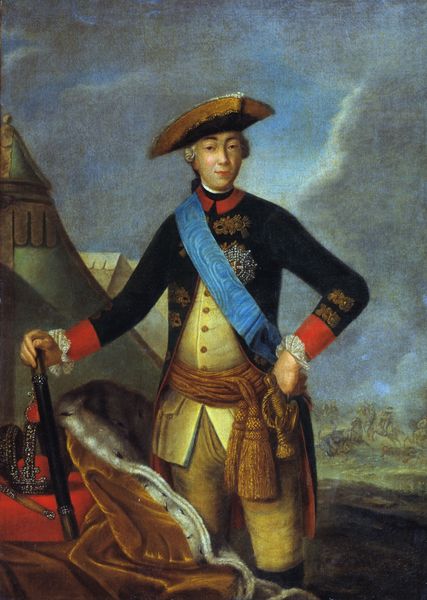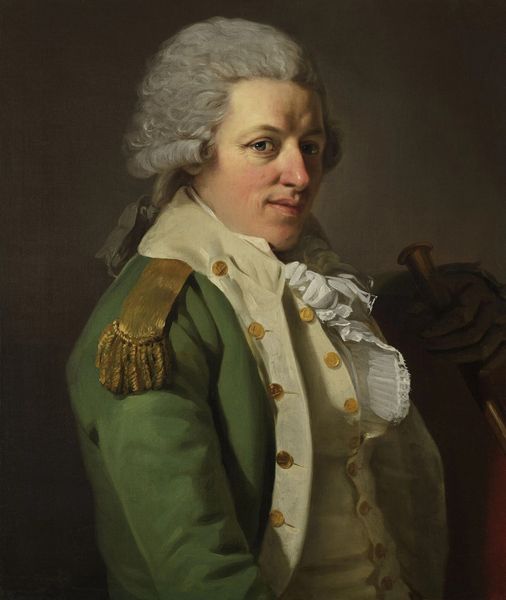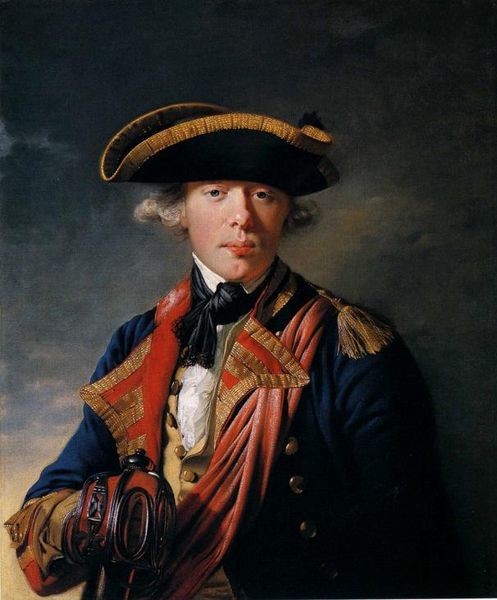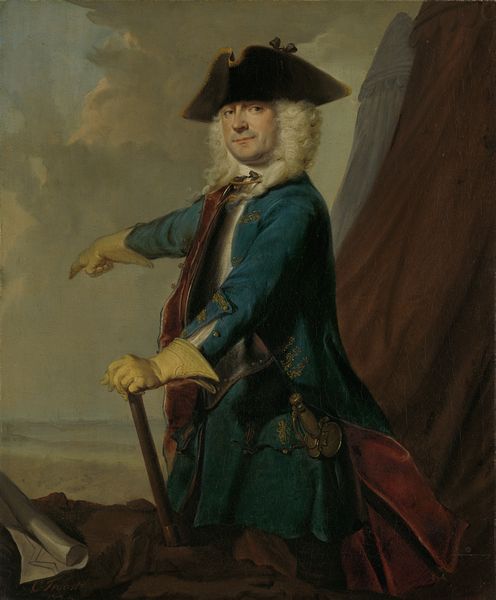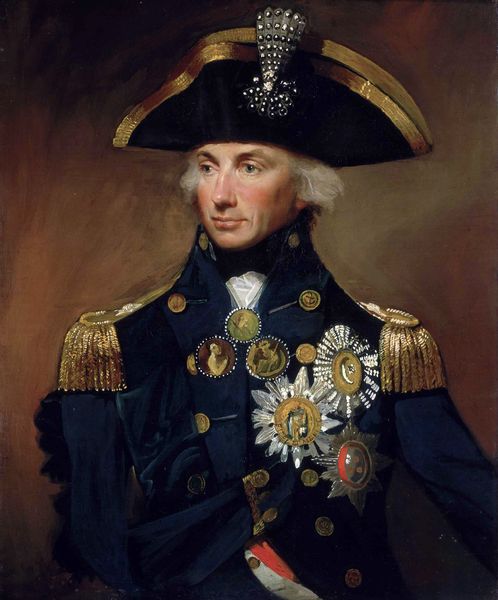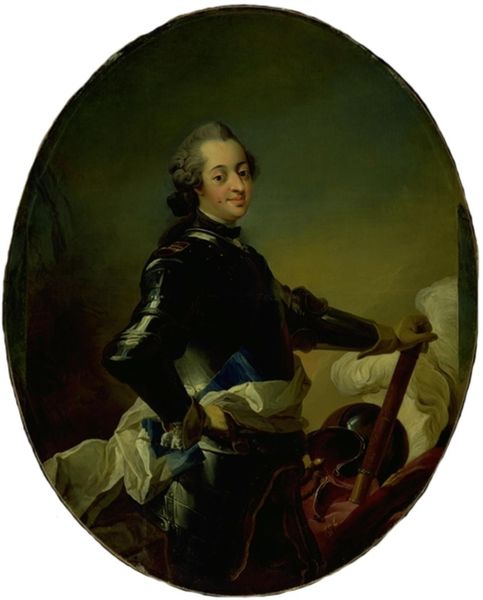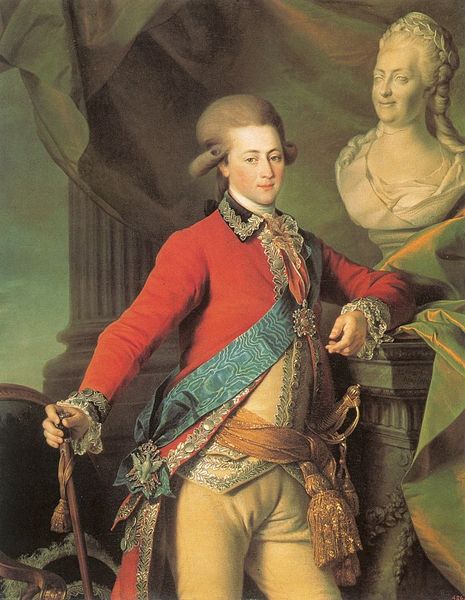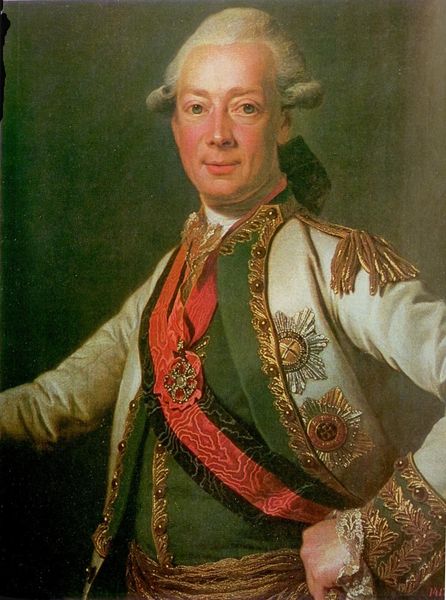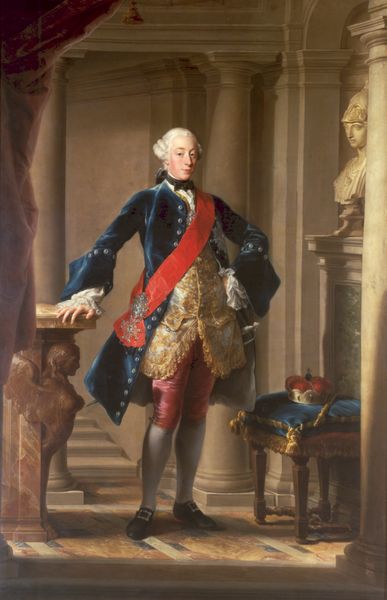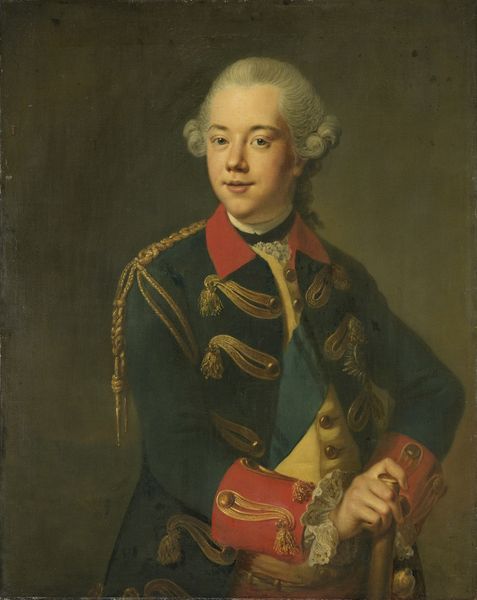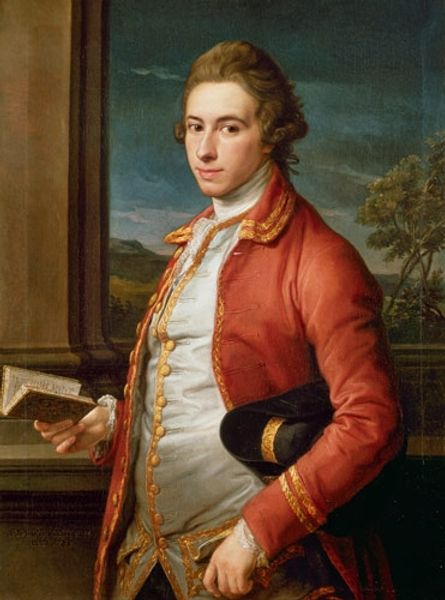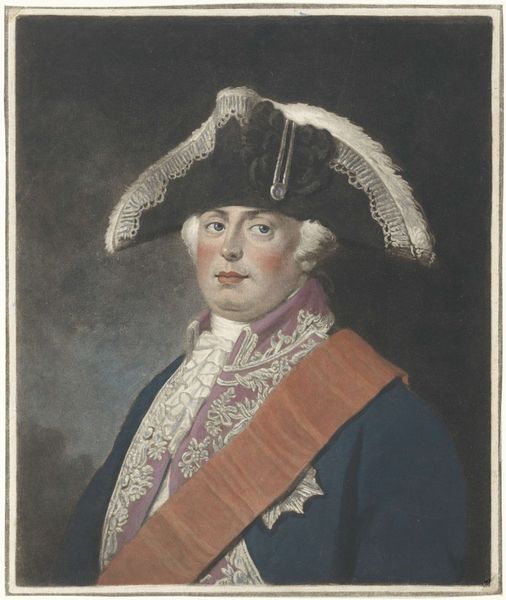
painting, oil-paint
#
portrait
#
painting
#
oil-paint
#
figuration
#
romanticism
#
history-painting
#
academic-art
#
realism
Copyright: Public domain
Editor: Here we have Vladimir Borovikovsky’s "Portrait of Paul I," painted in 1796 using oil paint. There is something very proper and official about this depiction. What's your take on this piece? Curator: I see the meticulous representation of the materials employed in crafting power. Consider the opulent details – the gold trim on the hat, the precise rendering of each medal, the fabric of the coat. Borovikovsky uses oil paint to convey not just likeness, but the *stuff* of authority. What kind of labor do you think was necessary for these materials? Editor: Oh, that’s interesting! I hadn’t really considered that aspect of it. The gold alone must have taken considerable skill to produce and apply to the hat. Curator: Precisely. This wasn't simply about likeness; it's about the display of wealth and the control of resources. Consider too how painting itself at that time was deeply embedded in the academy structure, dictating subject, materials, and ultimately meaning. Was this painting simply 'commissioned', or more likely prescribed by an academic council to Borovikovsky, do you think? Editor: Prescribed... It sounds much more rigid that way, and explains the somewhat standardized approach. I always just assumed the subject determined the style, but this makes me consider the larger picture in terms of power relations in the arts! Curator: It goes further – where did those raw materials for the gold in his decorations and oil paint come from? It provokes critical thought about consumption. I now wonder if these resources directly affect the power balance in Paul I’s time? Editor: It's a lot to digest, but you've given me so much to think about regarding how materials and their means of acquisition connect directly to the person depicted. Thank you for expanding my understanding of materiality beyond surface appearances.
Comments
No comments
Be the first to comment and join the conversation on the ultimate creative platform.
